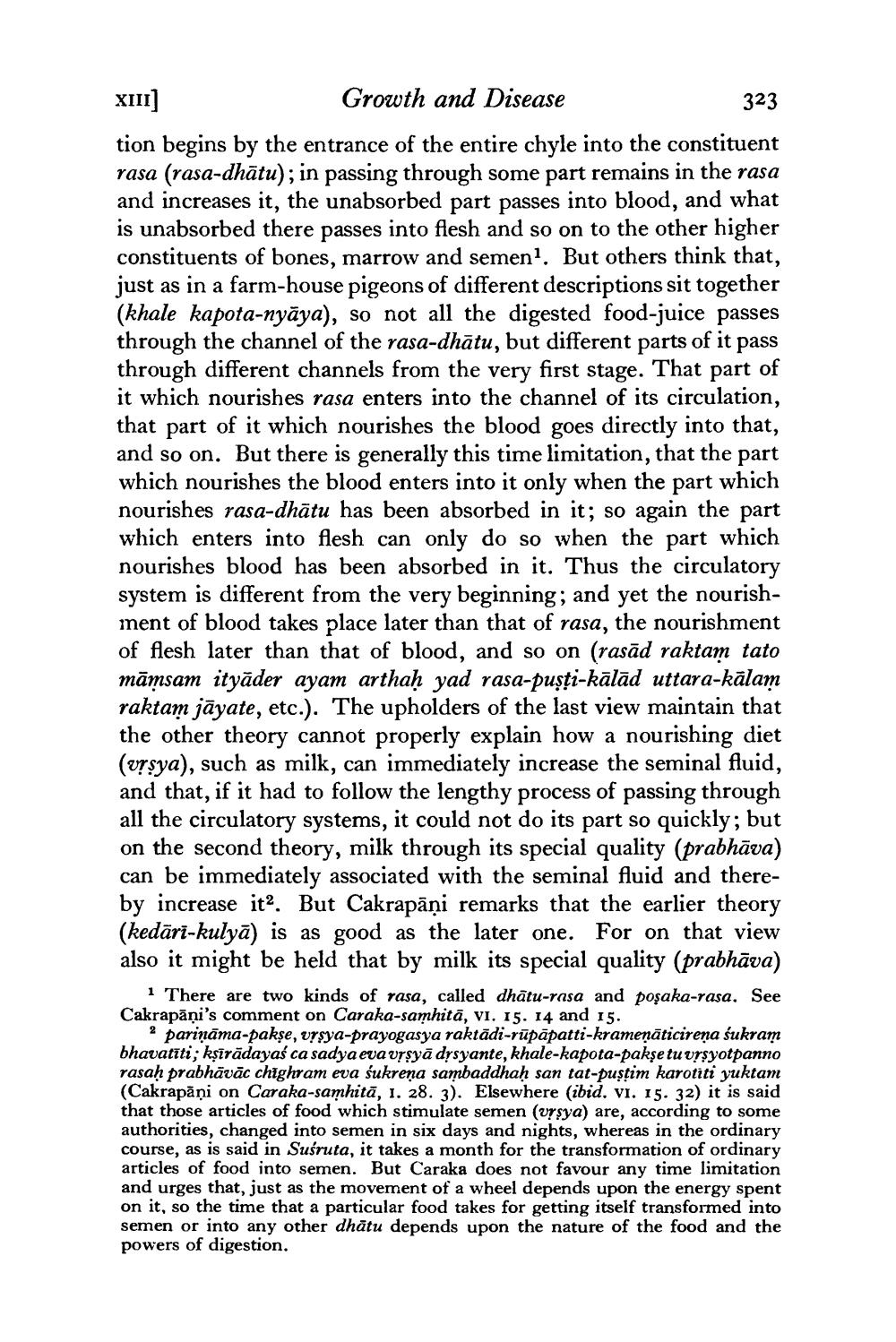________________
XIII Growth and Disease
323 tion begins by the entrance of the entire chyle into the constituent rasa (rasa-dhātu); in passing through some part remains in the rasa and increases it, the unabsorbed part passes into blood, and what is unabsorbed there passes into flesh and so on to the other higher constituents of bones, marrow and semen?. But others think that, just as in a farm-house pigeons of different descriptions sit together (khale kapota-nyāya), so not all the digested food-juice passes through the channel of the rasa-dhātu, but different parts of it pass through different channels from the very first stage. That part of it which nourishes rasa enters into the channel of its circulation, that part of it which nourishes the blood goes directly into that, and so on. But there is generally this time limitation, that the part which nourishes the blood enters into it only when the part which nourishes rasa-dhātu has been absorbed in it; so again the part which enters into flesh can only do so when the part which nourishes blood has been absorbed in it. Thus the circulatory system is different from the very beginning; and yet the nourishment of blood takes place later than that of rasa, the nourishment of flesh later than that of blood, and so on (rasād raktam tato māmsam ityāder ayam arthaḥ yad rasa-pușți-kālād uttara-kālam raktam jāyate, etc.). The upholders of the last view maintain that the other theory cannot properly explain how a nourishing diet (vrsya), such as milk, can immediately increase the seminal fluid, and that, if it had to follow the lengthy process of passing through all the circulatory systems, it could not do its part so quickly; but on the second theory, milk through its special quality (prabhāva) can be immediately associated with the seminal fluid and thereby increase it? But Cakrapāņi remarks that the earlier theory (kedāri-kulyā) is as good as the later one. For on that view also it might be held that by milk its special quality (prabhāva)
1 There are two kinds of rasa, called dhātu-rasa and poşaka-rasa. See Cakrapāņi's comment on Caraka-samhitā, vi. 15. 14 and 15.
2 pariņāma-pakse, vrsya-prayogasya raktādi-rūpāpatti-kramenāticirena śukram bhavatīti; kşīrādayaś ca sadya eva vrsyā dysyante, khale-kapota-pakşe tu vrsyotpanno rasah prabhāvāc chighram eva śukreņa sambaddhaḥ san tat-puştim karotiti yuktam (Cakrapāni on Caraka-samhitā, 1. 28. 3). Elsewhere (ibid. vi. 15. 32) it is said that those articles of food which stimulate semen (vrsya) are, according to some authorities, changed into semen in six days and nights, whereas in the ordinary course, as is said in Suśruta, it takes a month for the transformation of ordinary articles of food into semen. But Caraka does not favour any time limitation and urges that, just as the movement of a wheel depends upon the energy spent on it, so the time that a particular food takes for getting itself transformed into semen or into any other dhātu depends upon the nature of the food and the powers of digestion.




